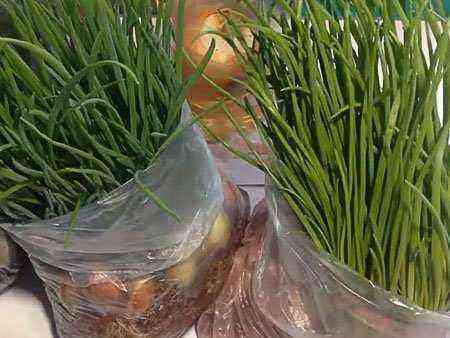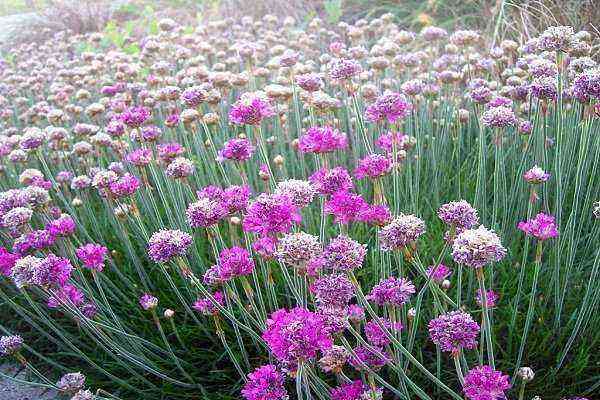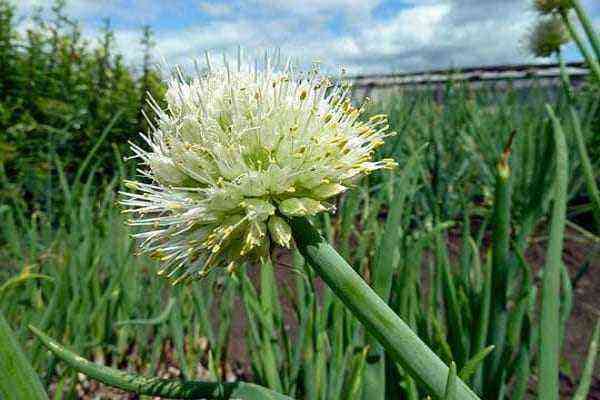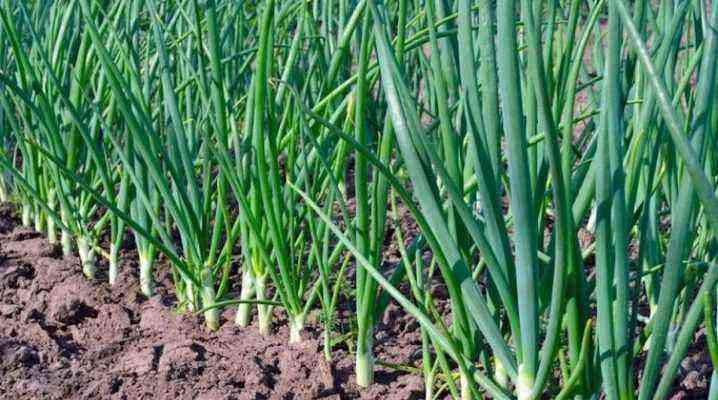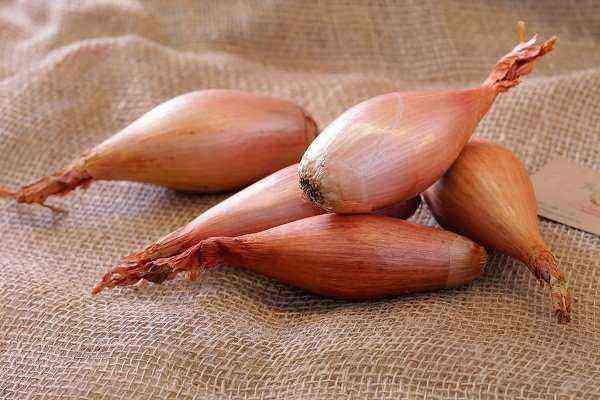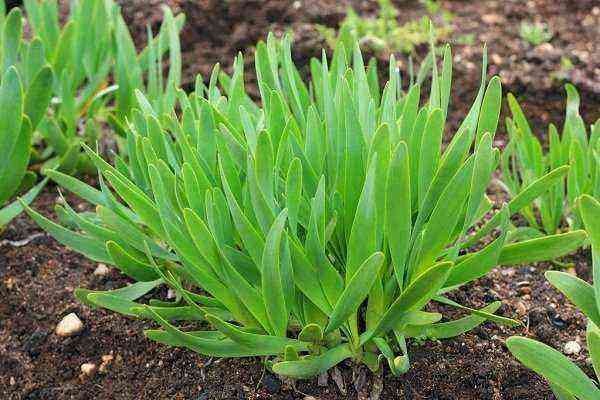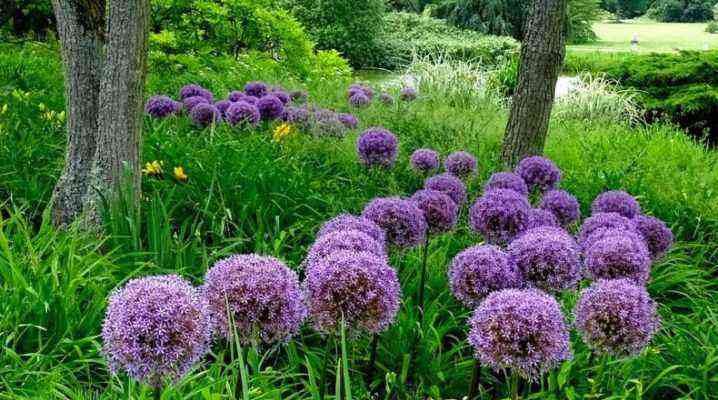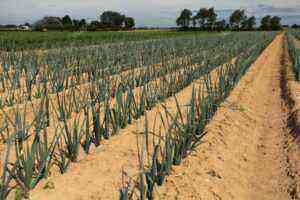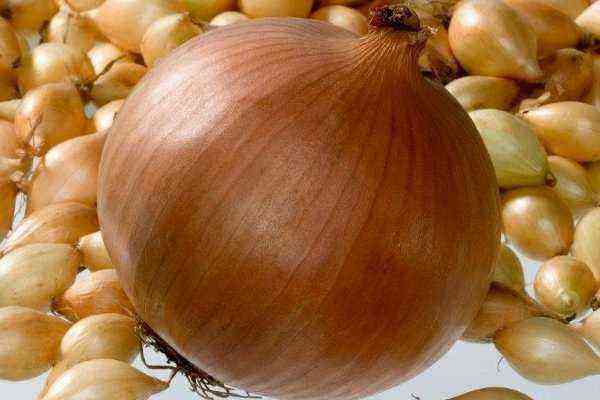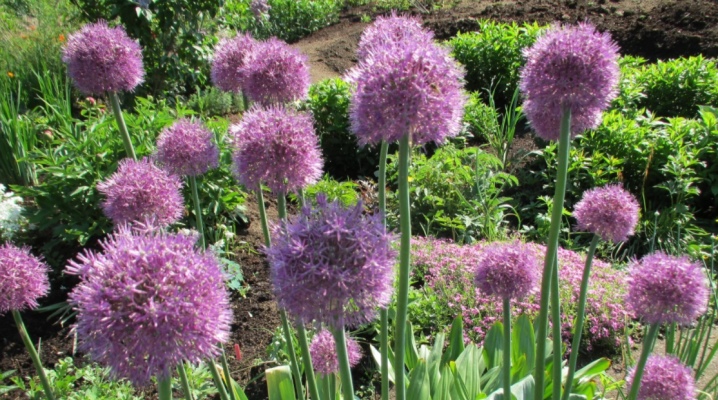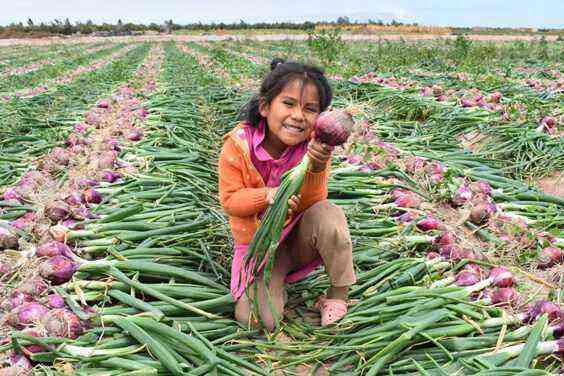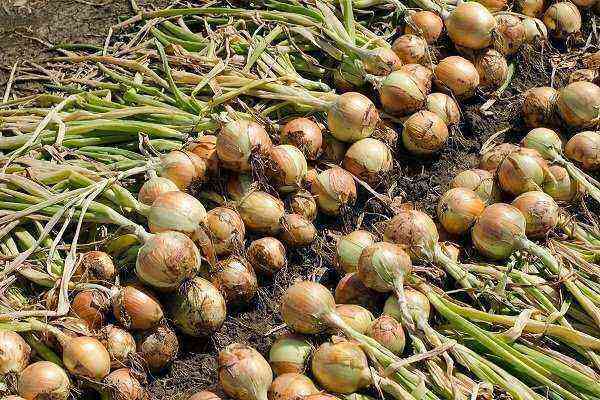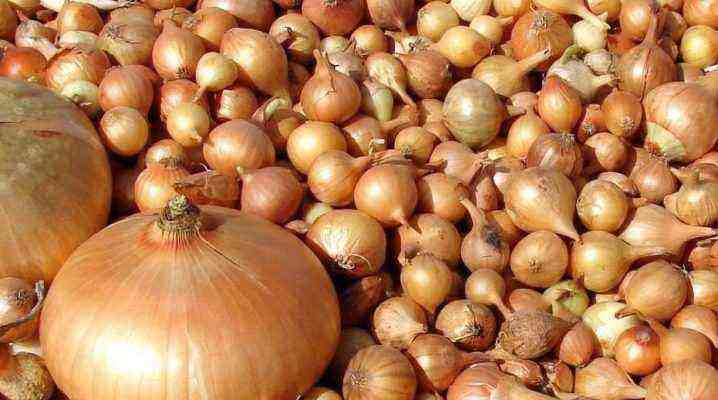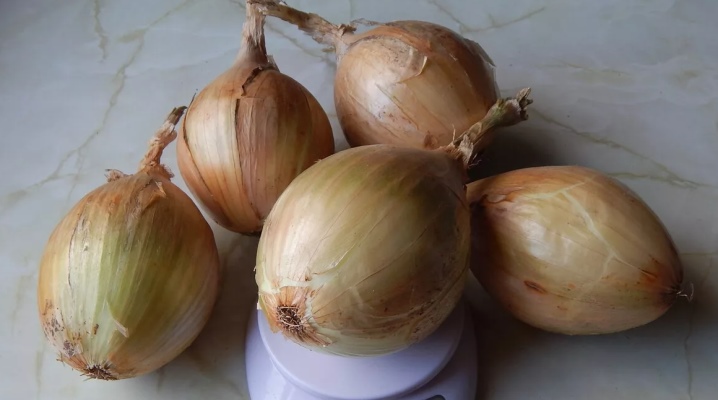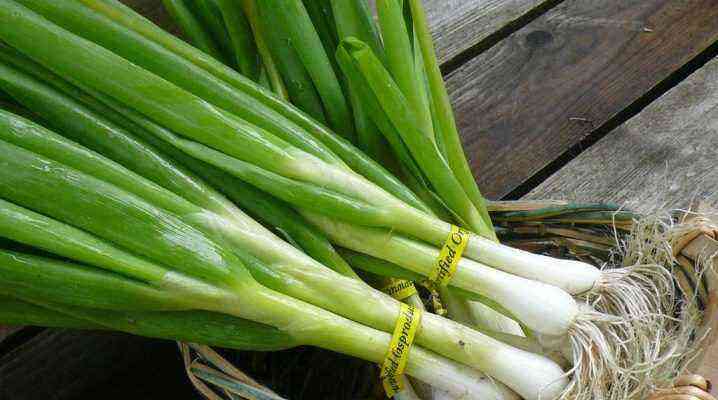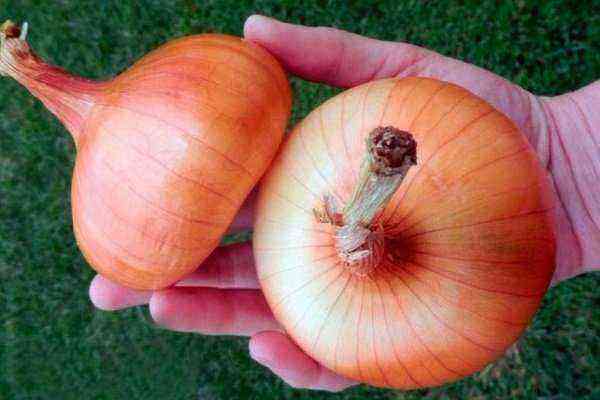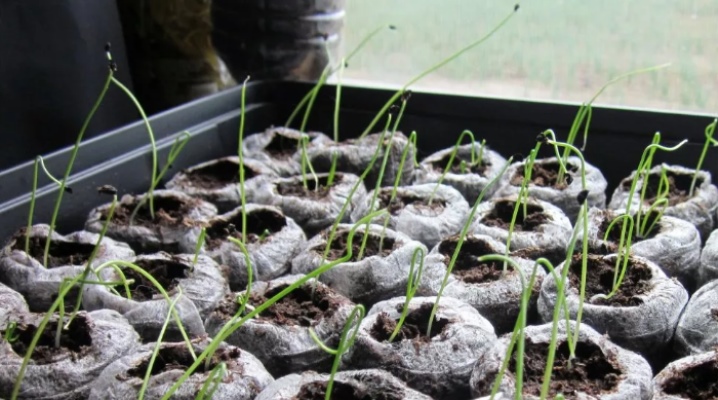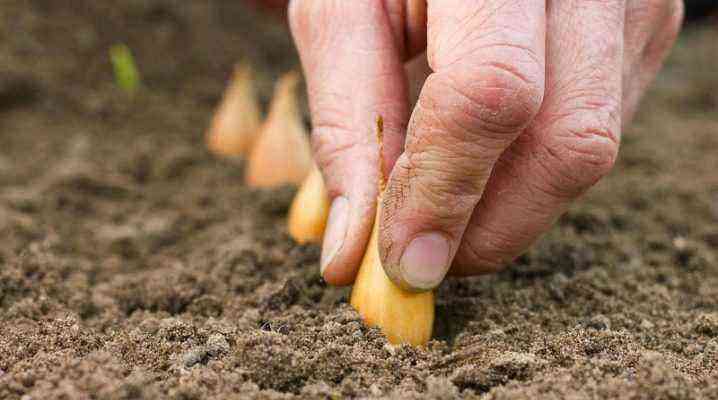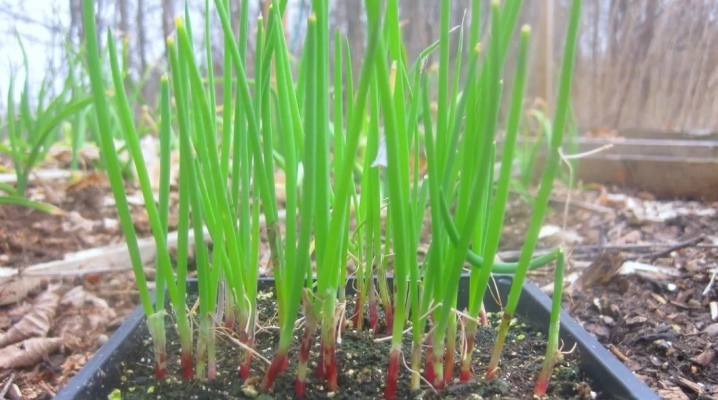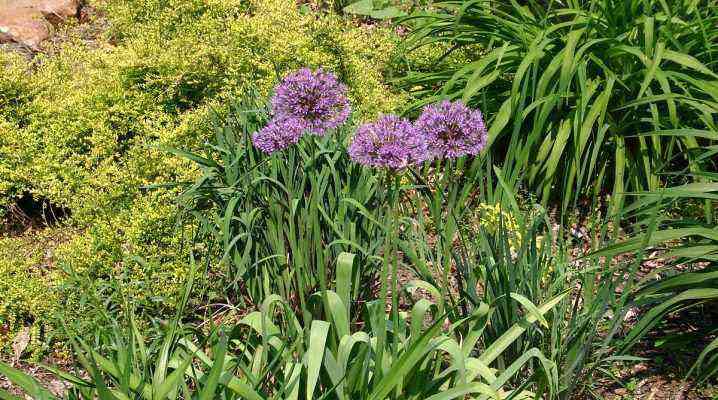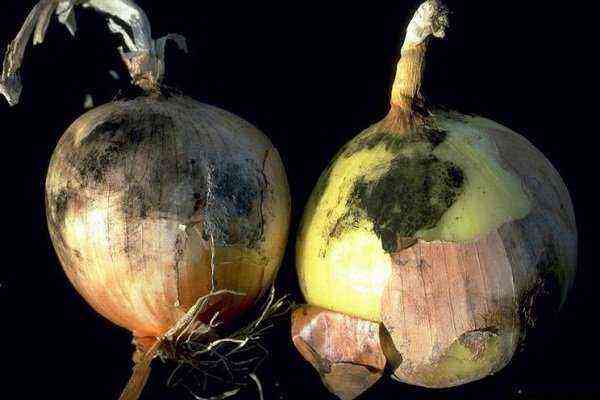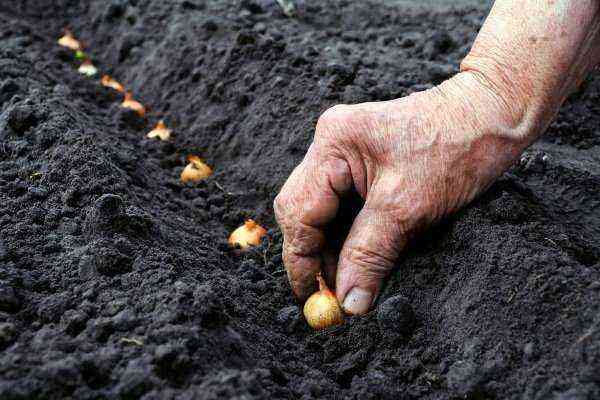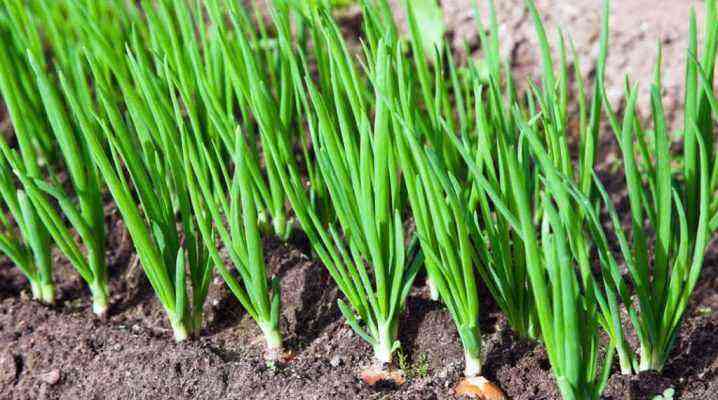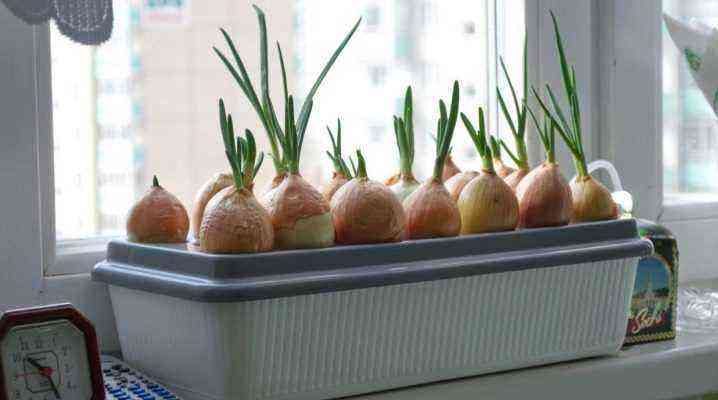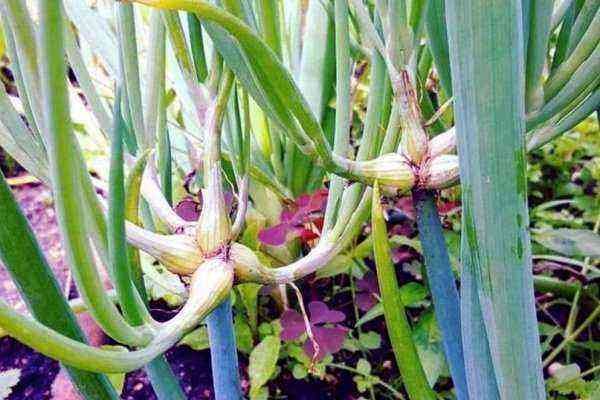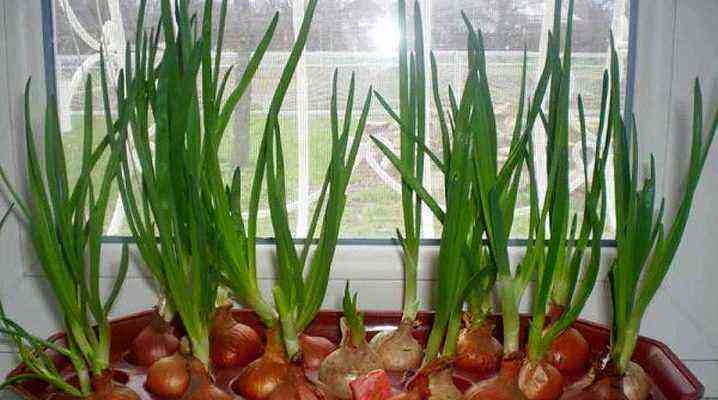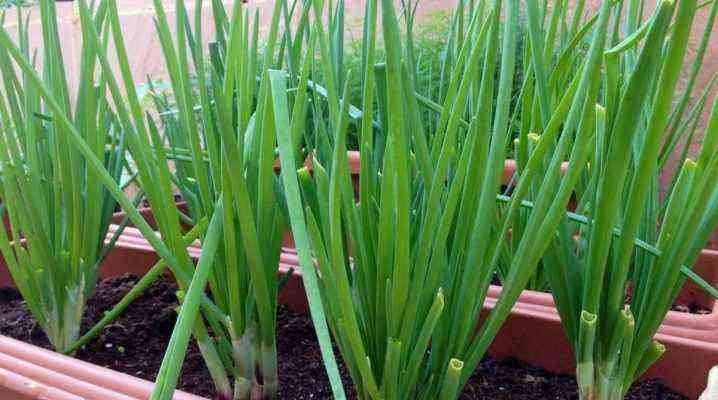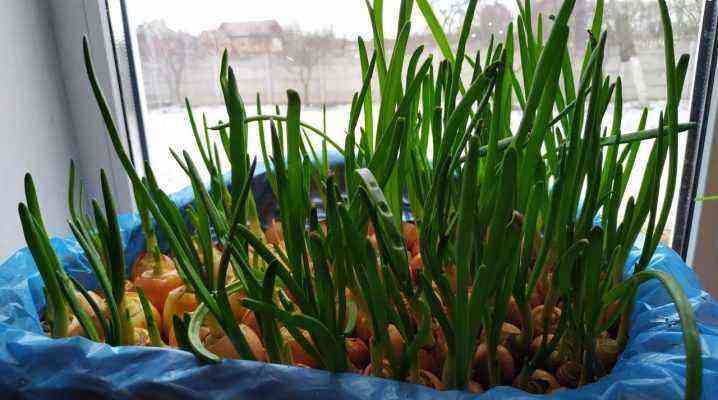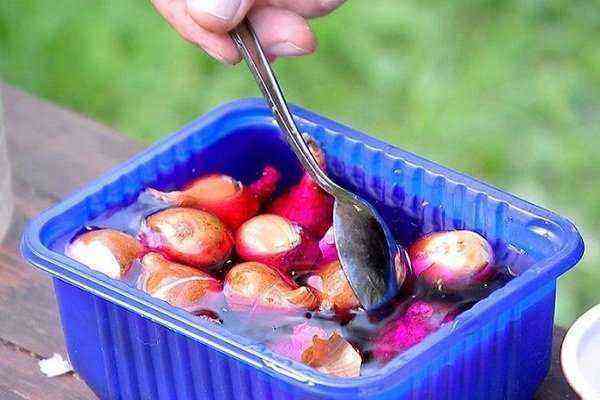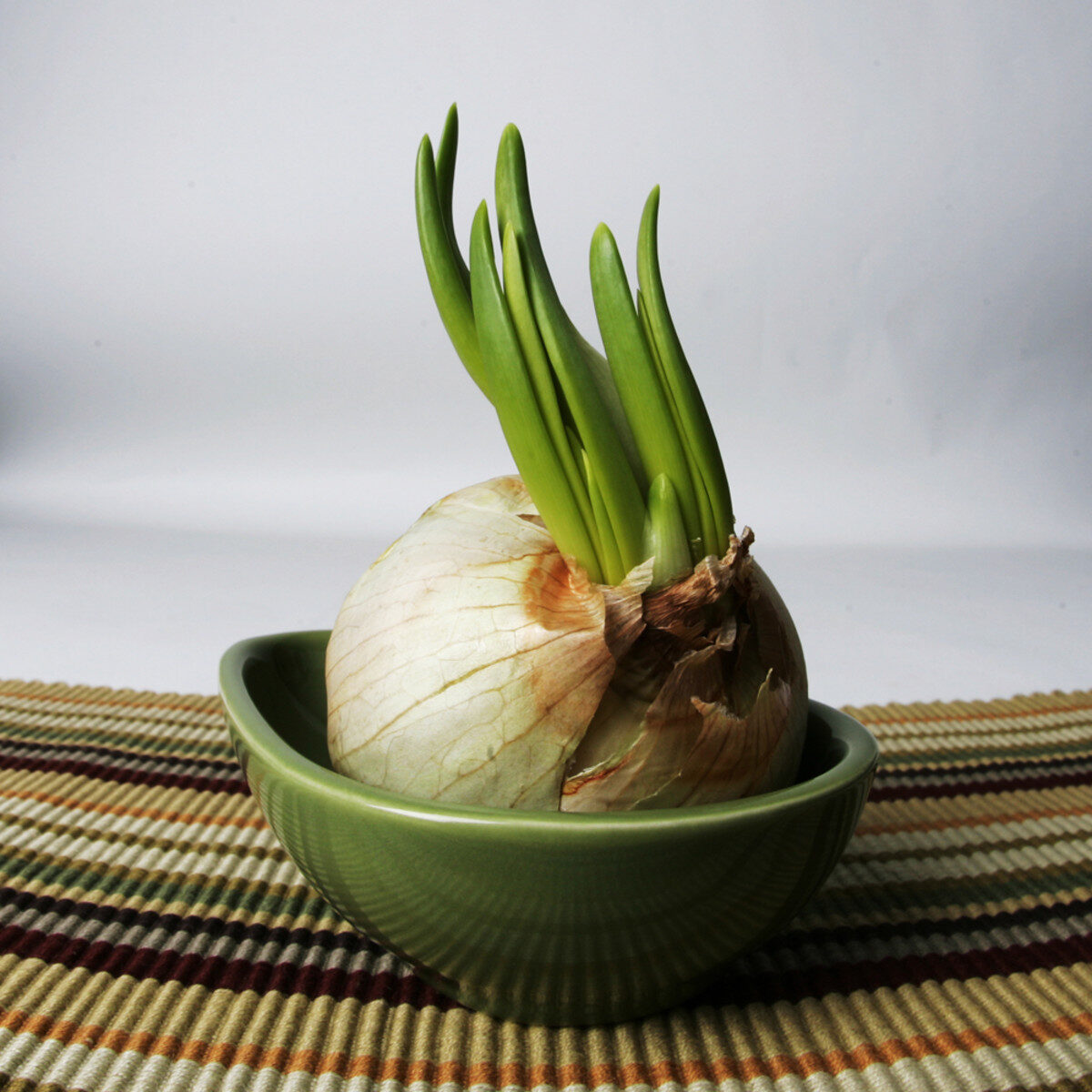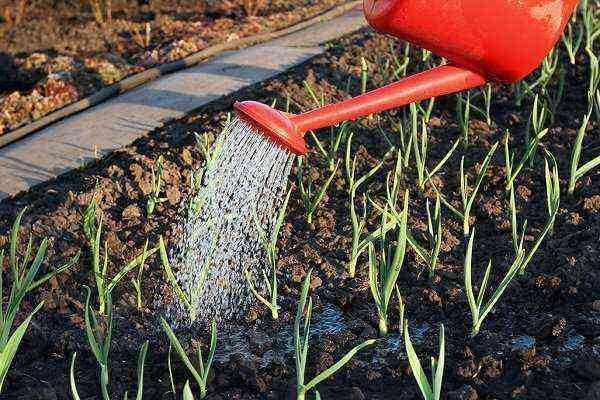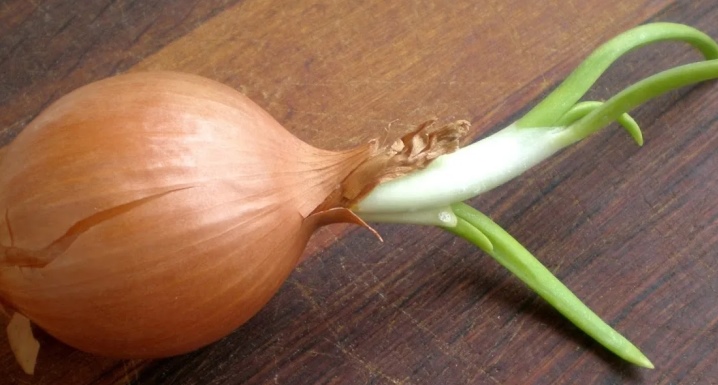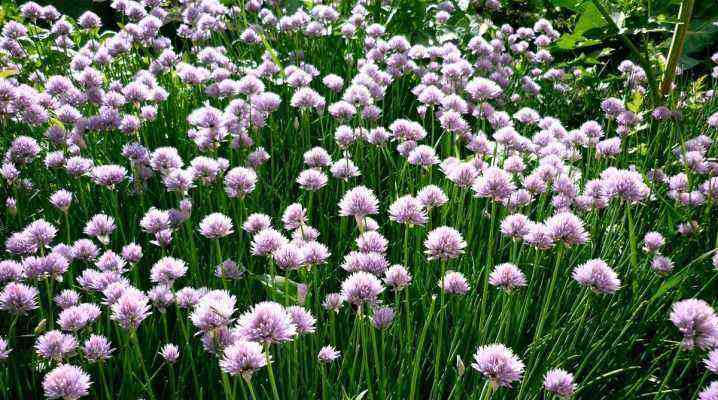To grow onions, summer residents most often buy young bulbs on the market and store them in proper conditions in order to sow them in open ground in the spring. To get a good harvest, you should know how to properly plant and care for onion sets in the garden.

What is an onion set?
On the market you can see a small one-year-old onion obtained by seed. This is the sevok.
There are several varieties of the beam, based on its size:
- oatmeal – the smallest onions (up to 1 cm);
- first grade (up to 1,5 cm);
- second grade (up to 3 cm);
- samples – the largest onions (from 3 cm).
The best varieties of onion sets
Breeders have bred many varieties of onions. It is advisable to choose sets of zoned varieties – it takes root better in specific climatic growing conditions. The following are the most popular onion varieties for growing from sets.
Orion
An early ripe hybrid bred by English breeders. The bulbs are rounded, weighing about 180 g. The variety is good because it can be stored for a long time without loss of quality.
Sturon
An early ripe variety, characterized by good germination, high yield, immunity to various infectious pathologies, and the ability to store for a long time. The bulb of the Sturon variety weighs 100-160 g. The taste is pleasant, moderately spicy.
Shalot
Elite variety. Onion pulp is juicy, mild in taste, does not cause tearing when cut, suitable for various culinary purposes, rich in vitamins, minerals, and bioactive substances.
Stardast
Mid-season onion with white husk. Differs in amicable emergence of shoots, good safety of a crop.
Stuttgart Riesen
Early onion. Yields are consistently high. Shelf life without loss of quality is long. Bulbs are heterogeneous in mass: the smallest weigh 50 g, the largest – 300 g. The only negative is the plant’s susceptibility to peronosporosis and rot.
Centurion
A variety of the Stuttgarter Riesen variety, characterized by slightly oblong bulbs, bred to obtain a bulbous, but not green mass. When creating optimal conditions, germination is 100%. Arrows are almost not formed. Susceptibility to diseases is low. Storage is long (up to 9 months). The taste is quite sharp, spicy.
Red Baron
Onions of saturated red color with high nutritional qualities. The taste is pleasant, medium sharpness, pronounced aroma. The plant is capricious: quickly withers without weeding and regular watering.
Exclusive
A variety with large sweet bulbs weighing up to 800 g. The bulb reaches its maximum size by 4 months. Shelf life is average (up to 4 months).
Kaba
Late onion. Bulb teardrop-shaped with greenish-white flesh, yellow or beige husk. The plant is susceptible to fungal infection and onion fly damage.
Benefits of growing onion sets
Gardeners prefer to use sets for growing onions because:
- the growing season lasts six months;
- when grown by a two-stage method, it is possible to obtain a good harvest in any climatic region;
- the resulting plants have a strong root system, immune to the neighborhood of weeds.
Planting dates in open ground
The optimal time for planting sevka is the first week of May. During this period, the earth is already sufficiently warmed up by the spring sun, but is still saturated with moisture left after the snow cover has melted, so the bulbous roots take root well.
In different regions of the country, planting dates may be shifted forward or backward, taking into account climatic features.
Planting onion sets
Onion is a non-capricious crop, the yield reaches almost 100%. But this does not mean that it is not necessary to comply with agrotechnical requirements. If the planting material is not processed, and the soil is not prepared according to the rules, then young plants will get sick, the size and quality of the crop will decrease significantly.
The landing procedure is carried out in stages and includes:
- purchase of planting material;
- processing bulbs to improve growth and protect against disease;
- preparation of planting soil;
- the landing process.
Selection of bulbs
The quality of planting material is extremely important for a bountiful harvest. When buying a set, you should carefully inspect each onion. Its surface should not be wrinkled, dented, it should not have scratches, cracks, signs of decay and infection. The bulb must not be sprouted.
It is advisable to select bulbs of the same diameter. Experienced gardeners try to buy oatmeal or first grade, since the largest crop is obtained from the smallest set. Also, a small bow shoots arrows less often.
If the planting material being sold is sealed in a package, it must contain the expiration date, batch number, and variety name.
Some bulbs may be darker than others. Perhaps they got wet. If the problem is not running, then just put them on paper and leave them near the heating system to dry. If the pulp is very damp, then the purchase will have to be disposed of.
Optimal soil for planting
For onions, alkaline loam or sandstone is preferred. The soil in the area selected for planting must be pre-treated.
Soil preparation is carried out in the fall. Before the arrival of frosts, the earth is dug up on the site to a depth of 20 cm. Top dressing is applied. It is best to use mullein or compost with peat. Fertilization should be preliminary, it cannot be carried out just before planting the onion sets, since the nutrients must be processed in the soil.
Onions do not do well in acidic conditions, so the soil must be checked for acidity. To reduce acidity, chalk, lime, and ash are mixed into the soil. These substances cannot be used simultaneously with fertilizers, otherwise the fertility of the soil will decrease: in the humus-peat mass used for top dressing, nitrogen will be destroyed, without which the full development of a vegetable crop is impossible.
Onions growing on well-prepared soil produce large bulbs.
Selecting a landing site
For bulbous beds choose a lighted area. It is important that groundwater is deep. This helps to prevent waterlogging of the soil, rotting and death of plants.
When planting onions, it is important to consider the nuances of crop rotation. It is better to make beds where tomatoes, potatoes, pumpkin, cereals grew last season.
You can not plant sevok after garlic and root crops. These crops intensively draw nutrition from the soil, and the onion will be deficient in nutrients. It is also unacceptable to plant onions in the same area for two consecutive seasons.
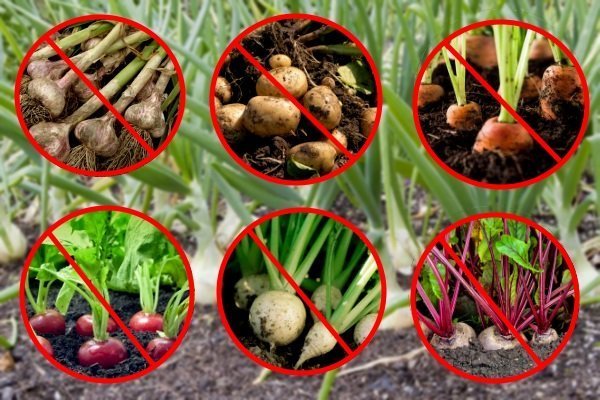
Processing the bulbs before planting
Sevok bought on the market must be warmed up. 2 or 3 days before planting, the bulbs are placed in a mesh bag, hung over a heater. The air temperature near the grid should be 30-40 degrees.
Before planting, the bulbs are soaked in a container of warm water. For soaking, you can use not water, but a mineral solution to accelerate growth processes. It is best to take the drug “Nitrofoska”, a tablespoon of which is dissolved in a 10-liter bucket.
It also does not hurt to process planting material from infectious diseases and insect pests. Universal protective solution – a teaspoon of copper sulfate per 10-liter bucket. The bulbs are kept in it for 10 minutes. The solution can be prepared from any other fungicide.
The most common onion pest is the onion fly. To prevent her attack, they use birch tar, the smell of which is unbearable for her. Make a solution: a tablespoon of the substance per 1 liter of water. Bulbs are kept in this solution for 15 minutes. It is also used for spraying vegetative plants in the beds.
After the appearance of the first roots, you can plant in the ground.
Some summer residents are faced with the fact that the sevok begins to abundantly produce flower stalks. The reason is the storage of planting material under the wrong temperature conditions. The sevok is kept cool, but the minus temperature at the place of storage provokes the release of flower arrows. This is how the plant reacts to adverse conditions: it starts the processes of accelerated emergence of offspring to preserve the population. In this regard, it is unacceptable to subject the onion sets harvested for planting to cold stress.
Landing technology
2 weeks before planting, the soil is loosened, enriched with humic organic matter. You can use the drug “Gumi Kuznetsova”. A week before planting onions, the soil is disinfected, watered with a solution made from a tablespoon of copper sulfate and 10 liters of water. Also, for disinfection, the Fitosporin preparation is used both in powder form (a teaspoon per 10-liter bucket) and in pasty form (a tablespoon per 10 liters of water).
Then you can land. Grow onions from sets both in spring and before winter. In the second case, the procedure is practically no different from the first. The only difference is that the grown plants are covered with mulch before the arrival of cold weather.
The size of the sown area can be any. The main thing is to make it convenient to take care of the culture in the future.
Landing is carried out in stages as follows:
- Oats are planted at a distance of 5 cm from each other. The distance between the bulbs of the first and second grade is 8 cm, between the samples – 10 cm.
- The distance between the beds is 20-25 cm. Closer rows should not be formed, otherwise there will not be enough soil space for the development of the onion root system. If the farmer uses a walk-behind tractor on the plot, then the row spacing should be 60-70 cm wide.
- The depth of the furrows should be 5 cm.
- Bulbs are inserted into the furrows “on the shoulders”: not only the roots, but also part of the bulb should be under the level of the soil surface. This is important for maintaining the stability of the seedling, which does not yet have well-developed roots.
- On top of the furrow, they sprinkle with ash, which acts as a top dressing and disinfectant.
- Furrows are covered with earth.
If planting is carried out before winter, then straw and sawdust are used as mulch. The thickness of the protective layer should be 3-4 cm. If the procedure is performed in the spring, then the crop is harvested in August.
If a summer resident grows onions in order to obtain not bulbs, but greens, he can save space by planting with a bridge method. In this case, the bulbs are placed very close to each other, deepening slightly. By this method, onions are grown not only in open ground, but also in containers.
If you want to get both greens and bulbs, and there is not much free space on the site, then a mixed planting is made. They make standard furrows, but the sets on them are placed in a checkerboard pattern close enough to each other. Some of the seedlings will remain until the formation of bulbs, some will be pulled out earlier for the use of fresh green arrows.
How to plant onion sets is shown in this video:
Caring for onion sets in the open field
Onion cannot be called a capricious culture, but it is not completely unpretentious either. The plant needs a sufficient amount of sunlight, regular watering, top dressing.
Thinning
After the emergence of seedlings, the beds must be thinned out. Otherwise, some of the bulbs will be empty. Thinning is carried out after the appearance of the first true leaf. Pull out small and stunted seedlings.
Additional fertilizing
To increase the yield without high-quality top dressing is indispensable. Onions need both organic and mineral substances. Organic matter is necessary to improve the quality of the soil, its nutritional value. In a substrate saturated with organic matter, the roots more actively absorb mineral supplements.
It is advisable to fertilize in the evening. Mineral complexes are used both dry and liquid. When applying liquid top dressing, care should be taken not to spill the solution on the greens. A day after top dressing, the beds are watered with plain water.
The table shows the terms and rates of fertilizer application.
| Fertilizer | First application (4 weeks after the first shoots), g/sq. m | Second application (during bulb formation), g/sq. m |
| ammonium nitrate | 12 | 6 |
| superphosphate | 10 | 10 |
| potassium salt | 5 | 5 |
| organic matter (mullein, chicken manure, ash) | — | 1,5 liters (the mixture is diluted with water in a ratio of 1 to 6) |
Watering
Onions should not be deficient in moisture. In the dry summer period, watering is carried out until mid-July. For 1 sq. m of sown area take at least 20 liters of water. Water is poured in portions, the previous portion should be well absorbed before making the next one. The soil layer should be moistened to a depth of 30 cm.
Waterlogging for onions is no less dangerous than a lack of moisture. In a plant flooded with water, growth is delayed, the green mass begins to turn yellow.
If in July, after the cessation of irrigation and the formation of the underground part of the plants, rainy weather sets in, then an arched film coating is placed over the beds to protect against waterlogging.
Loosening
Onions grow well in loose, airy, well-drained soil. Loosening is done every 2 weeks. If the aerial parts of the bulbs fell asleep, then they must be freed from the ground.
Harvesting and storage of crops
The crop is harvested when the leaf stems begin to turn yellow and lay down. The bulbs are dug up, cleaned from the ground, and placed to dry under the sun for 2 hours. Then move to the shade, leave until the leaf mass dries. From it, bioactive substances pass into the bulbous pulp. The harvested crop is sorted.
Ovsyuzhki for the most part do not persist until spring, they dry up. Therefore, they are usually planted before winter. The first grade is selected for spring or autumn planting on bulbs and greens. The second grade and selections are planted in spring for greenery.
Store sevok in a cool room, but not at sub-zero temperatures. The optimum temperature is slightly above 0 degrees, relative humidity is 75%, in this case the bulb will stay dormant all winter. It can be a well ventilated cellar. Urban residents store small amounts of sevka in the refrigerator in the compartment for vegetables and fruits.
The collection and storage of onion sets is described in this video:
Growing onions from sets is not difficult. The culture is not capricious, so many gardeners do not even think about observing the rules of planting, do not devote much time to caring for seedlings. However, observing agrotechnical rules can significantly increase the yield of onions, and ignoring them can lead to the loss of a large part of the crop.
